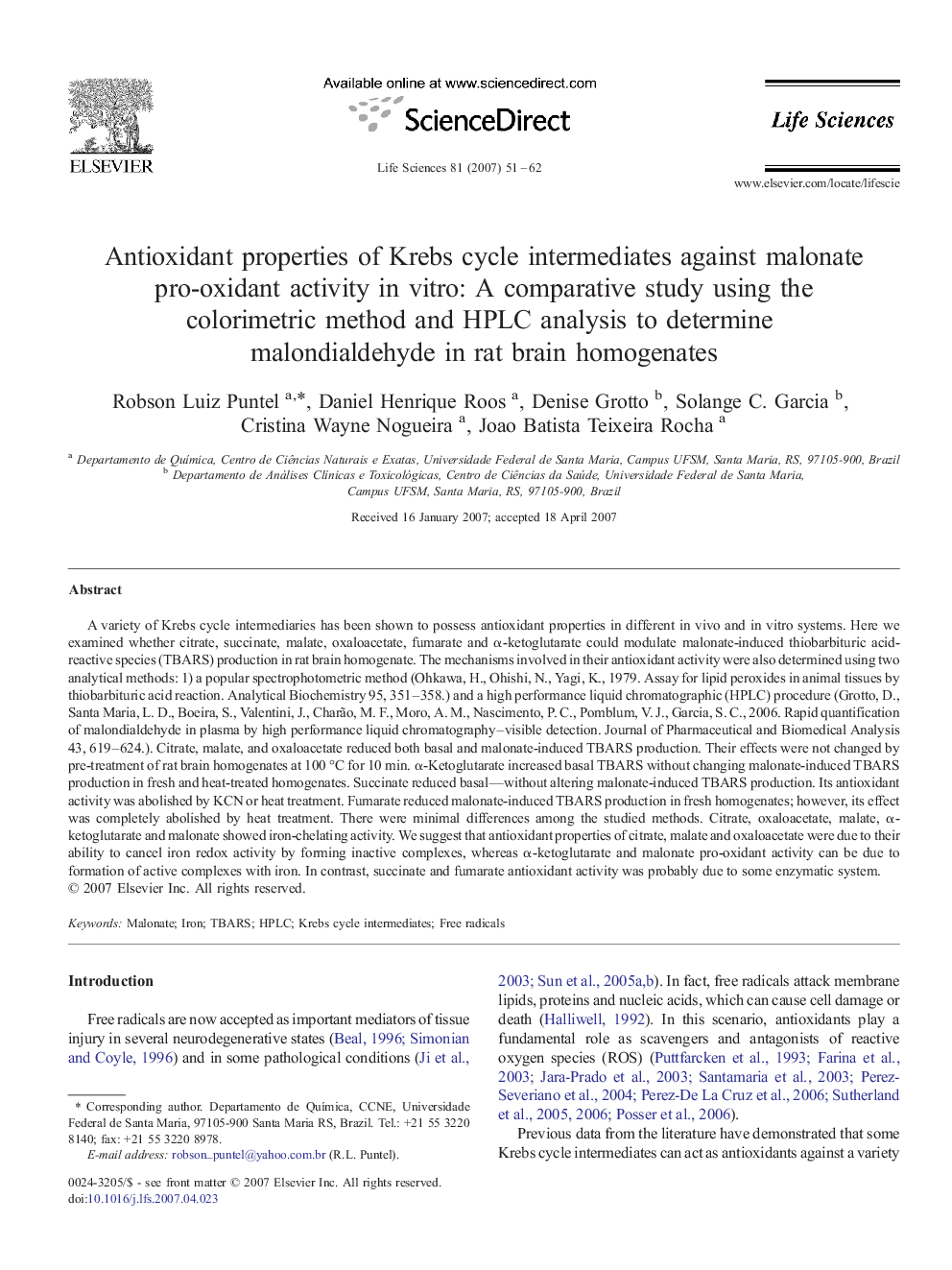| کد مقاله | کد نشریه | سال انتشار | مقاله انگلیسی | نسخه تمام متن |
|---|---|---|---|---|
| 2552637 | 1124853 | 2007 | 12 صفحه PDF | دانلود رایگان |

A variety of Krebs cycle intermediaries has been shown to possess antioxidant properties in different in vivo and in vitro systems. Here we examined whether citrate, succinate, malate, oxaloacetate, fumarate and α-ketoglutarate could modulate malonate-induced thiobarbituric acid-reactive species (TBARS) production in rat brain homogenate. The mechanisms involved in their antioxidant activity were also determined using two analytical methods: 1) a popular spectrophotometric method (Ohkawa, H., Ohishi, N., Yagi, K., 1979. Assay for lipid peroxides in animal tissues by thiobarbituric acid reaction. Analytical Biochemistry 95, 351–358.) and a high performance liquid chromatographic (HPLC) procedure (Grotto, D., Santa Maria, L. D., Boeira, S., Valentini, J., Charão, M. F., Moro, A. M., Nascimento, P. C., Pomblum, V. J., Garcia, S. C., 2006. Rapid quantification of malondialdehyde in plasma by high performance liquid chromatography–visible detection. Journal of Pharmaceutical and Biomedical Analysis 43, 619–624.). Citrate, malate, and oxaloacetate reduced both basal and malonate-induced TBARS production. Their effects were not changed by pre-treatment of rat brain homogenates at 100 °C for 10 min. α-Ketoglutarate increased basal TBARS without changing malonate-induced TBARS production in fresh and heat-treated homogenates. Succinate reduced basal—without altering malonate-induced TBARS production. Its antioxidant activity was abolished by KCN or heat treatment. Fumarate reduced malonate-induced TBARS production in fresh homogenates; however, its effect was completely abolished by heat treatment. There were minimal differences among the studied methods. Citrate, oxaloacetate, malate, α-ketoglutarate and malonate showed iron-chelating activity. We suggest that antioxidant properties of citrate, malate and oxaloacetate were due to their ability to cancel iron redox activity by forming inactive complexes, whereas α-ketoglutarate and malonate pro-oxidant activity can be due to formation of active complexes with iron. In contrast, succinate and fumarate antioxidant activity was probably due to some enzymatic system.
Journal: Life Sciences - Volume 81, Issue 1, 13 June 2007, Pages 51–62